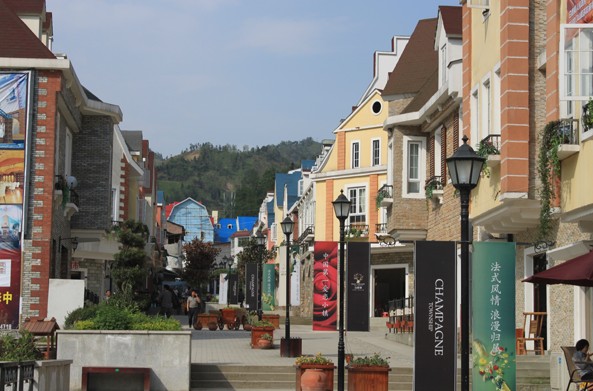Society
Quake town aims to be tourism city
By Yan Weijue (chinadaily.com.cn)
Updated: 2011-04-24 17:09
 |
Large Medium Small |
Stroll along a fancy lane, stop by a bistro, pour yourself a glass of Champagne and bathe in the sunshine. This is how you will soon spend a day if you visit Bailu, a town severely damaged by the 8.0 earthquake that struck Sichuan province on May 12, 2008.
|
 An upmarket street in Bailu, Pengzhou city, Southwest China's Sichuan province, April 23, 2011. [Photo by Yan Weijue/chinadaily.com.cn] |
Yes, this once bustling town has risen from the ashes, and, clearly not satisfied with a conservative restoration project aimed at returning the city to how it was, it wants more.
"We want to take advantage of this opportunity to make tourism our pillar industry," said Gao Tiancheng, Party chief of Bailu, Saturday when answering questions about the town's blueprint for rejuvenation.
The European style of the newly built villas in Bailu has its historical origins. It is said that a missionary from France came to the town in 1865, and spent 11 years on the construction of a Catholic church (Shangshuyuan Church) with the help of thousands of laborers. Amorous couples flocked to the romantic spot for wedding photos; that is, until the quake occurred, when celebration turned to tragedy.
Having considered the financial support available to the town, its commercial prospects and what its legacy should be, the local government decided to make the town into a tourist resort that, uniquely, integrates Chinese and western fashions.
Before the quake, Bailu's major industry, if it ever had one, was commodity sales between villagers.
But now, an exciting yet traditional tourist district is being formed, with bars, hotels, cafes, florists, wedding photo studios, and restaurants that are all scheduled to be completed by June 2011, according to Gao.
| 分享按钮 |